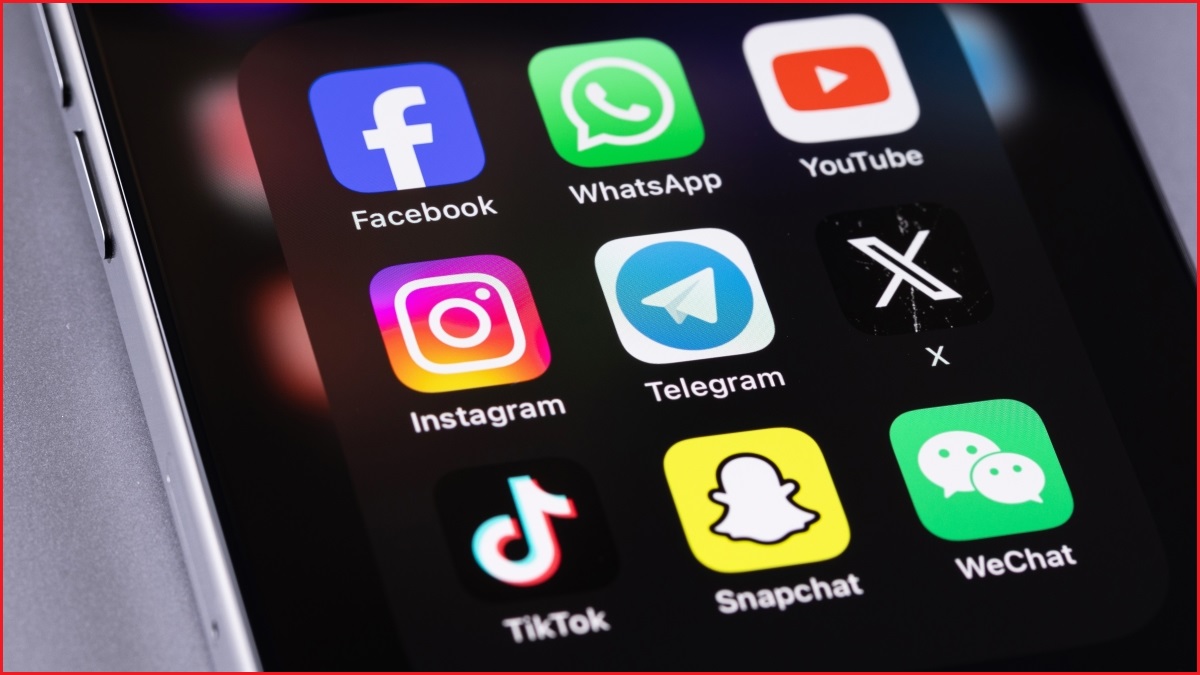Meta, TikTok, and Snap say the federal government’s plan to make Google’s YouTube exempt from Australia’s ban of under-16s from social media is incorrect and of concern, with TikTok labelling it “irrational”, “shortsighted”, and “a sweetheart deal”.
The three social media giants made the comments in statements on Wednesday and in submissions to a private government consultation on the controversial legislation, which is expected to be enforced by mid-December.
The companies argued YouTube — the world's most popular video hosting platform — should be subject to the same regulations as their services, which will be made to "take reasonable steps” to prevent under-16s from holding accounts or face fines of up to $50 million.
The government has said it planned to grant YouTube an exemption due to its educational content, along with platforms such as Google Classroom, online games, and some messaging apps.
But YouTube’s exemption would be a major misstep, according to Meta, TikTok, and Snap.
TikTok accuses government of ‘punitive treatment’
In its latest submission to the government, TikTok argued assumptions about YouTube’s educational value being unique to the platform were incorrect, and an exemption would give YouTube “monopoly access to under-16 users in Australia”.
“It would be akin to banning the sale of soft drinks to minors but exempting Coca-Cola,” said the company, which accused the government of “punitive treatment” of its own platform.
TikTok worried an exemption would also see YouTube “become the go-to platform for [16+] individuals that do not wish to undergo age assurance measures”, and said it believed YouTube’s Shorts function was very similar to TikTok’s feed and Instagram’s Reels.
TikTok even argued the government had “begun its analysis from the starting position that YouTube must be exempt and then attempted, half-heartedly, to reverse-engineer defensible supporting evidence”.
Ella Woods-Joyce, director of public policy for TikTok in Australia and New Zealand, said the Chinese-owned company had “grave concerns” the current form of Australia’s proposed rules “would not work”.
"We are particularly concerned that carving out any major platform by name – in this case, YouTube – from the minimum age obligation would result in a law that is illogical, anticompetitive, and short-sighted,” she wrote in an email to the department carrying out the government’s private consultation.
“It would fundamentally undermine and compromise the integrity of the government's regulatory framework for online safety, stymie fair competition, and fail to safeguard against inevitable and unpredictable product evolution over time.”
Meta says Australia disregarding ‘evidence and transparency’
Meta, which operates Facebook, Instagram, Threads, and WhatsApp, said it had seen a “disregard of evidence and transparency in how the government is determining which services will be included under the law”.
The company wrote in its policy blog that YouTube’s significant popularity among under-16s and studies citing some "significantly harmful content" on the platform meant its exclusion from the ban was “in direct contradiction to the government’s stated intent".
Both Meta and TikTok cited a February report from the eSafety Commissioner which found YouTube was the most popular social media platform for Australian children under 13, most of whom accessed it without their own account.
Meta said young people may still be able to view educational content on YouTube even if the under-16s ban prohibited underage users from having an account on the streaming platform.
“For example, young people can view educational or informational content through the account of a parent, carer or teacher, or in a ‘logged-out’ state completely,” the company said.
“… The stated educational benefits are therefore not a logical reason for excluding YouTube altogether from the definition of age-restricted social media platform.”

Meta, TikTok, and Snap say YouTube should not be granted an exemption under the government's social media legislation. Photo: Shutterstock
Why Snap thinks it deserves an exemption
Snap, which operates communications app Snapchat, said it agreed with the government’s proposal to exclude messaging services from the under-16s ban, and argued it should be treated as one.
The company said the government had suggested Snapchat would not be exempt because its Stories feature (which allows users to share photos or videos for a 24-hour period) meant its primary purpose was not messaging.
However, Snap argued the feature was also present in prominent messaging apps which the government was expected to grant exemptions to.
“This highlights the need for consistency in how the exclusion rule is applied,” Snap wrote in its submission.
There has been some public support for YouTube being granted an exemption from the government’s under-16s social media ban.
University of Sydney lecturers Catherine Page Jeffery and Joanne Gray wrote in February that “YouTube occupies an important place in the lives of young people”.
“So banning them from it would cut off an important source of information, education, entertainment and connection,” they said.
“… Unlike Facebook, Instagram and Snapchat, YouTube is not designed to be a social network.
“Users can and most commonly do go to the platform to passively watch videos, just as they might go to Disney+ or Netflix.”
Google did not respond to a request for comment.
Government awaits age assurance trial report
It is unclear exactly how the government’s social media legislation will be enforced, with a trial of various age assurances technologies expected to report to the government by mid-year.
Meta and Snap are among the dozens of companies which have contributed potential technologies for evaluation under the trial.
Apple last week said it planned to introduce age assurance technologies which can inform social media platforms if a user is underage.
The move pushed back against suggestions from social media companies that device-makers such as Apple and Google should be responsible for age assurance at the app store level.
Google revealed earlier this month that it would begin using artificial intelligence technologies to estimate the age of its users, as it responded to regulatory changes in countries such as Australia and the United States.










